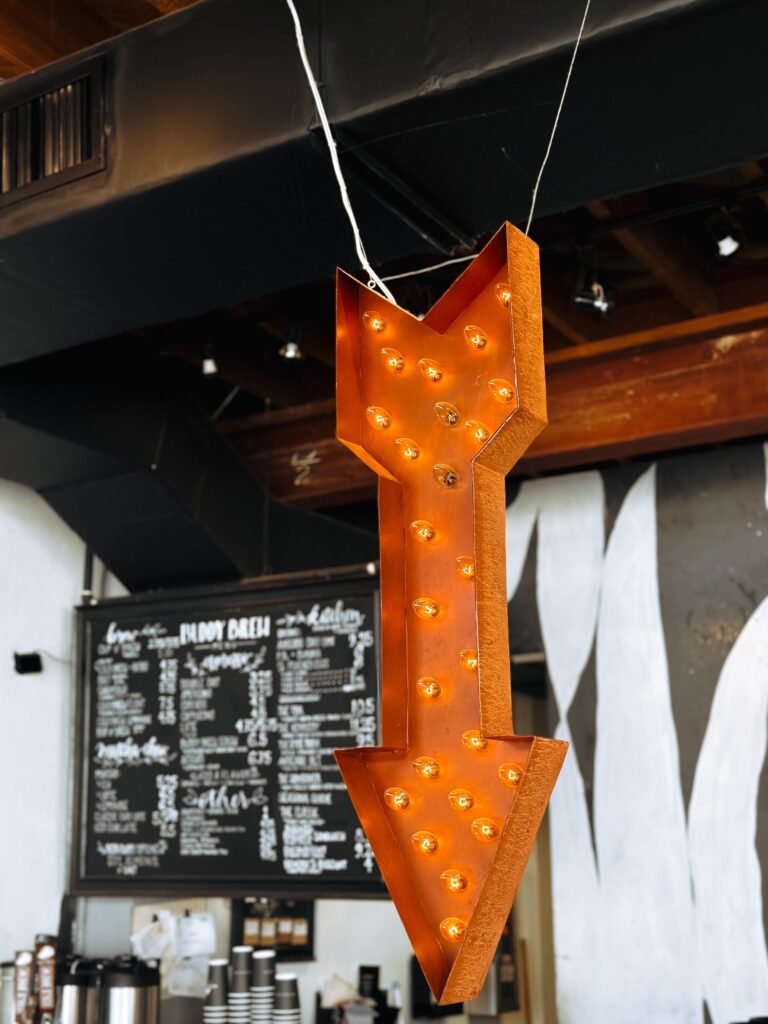Cafes have always been the go-to spots for remote workers and students seeking a change of scenery. The buzz of activity, the aroma of freshly brewed coffee, and the availability of WiFi made cafes the perfect informal co-working spaces.
However, cafes traditionally thrived on the steady flow of foot traffic from office workers, commuters, and passersby. In the wake of the pandemic, many coffee shops faced a daunting task: to reinvent themselves and adapt to the changing landscape to survive. COVID-19 dramatically reshaped the coffee industry as cafes grappled with indoor dining restrictions and working from home became the new norm.
Cafes not only lost their role as informal meeting places for traditional office workers but also experienced a decline in the presence of students, freelancers, and remote workers who often used cafes as secondary workspaces. While the National Coffee Association reported that more adults in the U.S. were drinking coffee than ever in 2021, traditional coffee shop visits declined. Out-of-home coffee consumption dropped from 35% in 2019 to 27% in 2022. The management consulting company Gartner predicts that fully remote and hybrid workers will account for 71% of the workforce in 2023.
It’s clear the pandemic has irrevocably changed how consumers interact with cafes: many workers aren’t returning to offices, and cafes cannot hope for their consumer base to resemble the past. But that doesn’t mean consumers have disappeared completely. Instead, they’re engaging with coffee shops differently, showing up at unconventional times and hanging around for new reasons.
How can coffee shop owners reinvent their businesses to meet the evolving needs of a transformed consumer base? Perhaps all you need is a little creativity and thinking beyond the confines of traditional cafe setups.
Fresh Air and New Perspectives
Andrea Artenstein, co-owner of Java Earth Coffee in San Diego, made strategic changes to the cafe’s seating arrangements due to indoor dining restrictions and the high demand for outdoor seating.

When COVID restrictions made indoor dining impossible, the team eliminated half of the indoor seating at their Pacific Beach location and shifted their focus to create an outdoor patio. “The main push was that we weren’t using our indoor space because it wasn’t allowed at times,” she says. “But it taught us that we didn’t need so much indoor space.” In 2022, when Java Earth opened its second location in La Jolla, Artenstein sought out a space providing ample outdoor seating.
The transformation of their space led to a shift in Java Earth’s customer base. While the Pacific Beach location used to attract a steady presence of remote workers and students who used the shop to study, it now welcomes a mix of families, tourists, and workers.
Java Earth has reopened its indoor space, but customers have embraced a new approach to utilizing the cafe. “We still have quite a few people that congregate inside and do their work, but it’s become more of a come-and-go spot. We wanted to create a space where everyone is welcome,” she says.
In addition to optimizing seating, Java Earth has also tinkered with and expanded its food menu over the years, catering to the food-focused vision of its founder, Debbie Artenstein, Andrea’s mother (Andrea and her brother Alex joined the family business in 2018).
Alongside beloved classics like their banana bread, Debbie develops new recipes for specialty pastries, such as the olive oil pistachio loaf with grapefruit glaze and the apple pumpkin loaf topped with pepitas. Beyond pastries, Java Earth expanded its breakfast and lunch menu options to cater to patrons visiting later in the day, including colorful grain bowls like the “Be Well Bowl” and breakfast options such as the “Mediterranean Bowl” and “Soy Chorizo Bowl.”
Artenstein says adding more food options has increased their average order value and overall sales volume. “We’re more food-focused than your average coffee shop—we get a lot of people that come for breakfast and lunch too.”
Java Earth once thrived as a hub for remote workers, but reducing indoor seating has reshaped the café’s dynamics, shifting away from remote work as the primary focus, explains Artenstein. With these changes, Java Earth now caters to a different customer experience. “People meet, they have their lunch or breakfast, and then go on with their day,” she adds.
Java Earth’s focus has shifted from catering to customers who stick around the cafe to offering patrons quick service and a convenient space for nourishment—a shift that has broadened the café’s appeal. But that doesn’t mean Artenstein and her team have forgotten about their remote workers.
We weren’t using our indoor space because it wasn’t allowed at times, but it taught us that we didn’t need so much indoor space. Andrea Artenstein, Java Earth Coffee
While traditional employees typically grab a quick to-go coffee in the morning on their way to the office, remote workers are more likely to shuffle in later, using the cafe as a respite from their at-home offices. “We have some great remote workers who visit daily for lunch and enjoy a coffee in the afternoon,” says Arstenstein.
This pattern sheds light on the growing appeal of coffee shops as a haven for remote workers seeking a change of scenery outside their homes amidst changes in when and where people are working. As fewer people rush out the door to work, grabbing a coffee on their commute, according to Artenstein, remote workers often rely on their home coffee makers for their morning coffee. They view cafes like Java Earth as places to indulge in an affordable luxury or for an afternoon treat—and a welcomed departure from their at-home offices.
An Escape From Home
Dave Ward of Buddy Brew Coffee, a popular coffee chain in Tampa, Florida, recognizes the role that coffee shops play in providing an escape for remote workers. In 2021, Buddy Brew witnessed a significant surge in foot traffic as remote workers flocked to their locations, searching for a change of pace.
“How long can you stay cooped up in your house? You can’t, so people came out,” Ward says. “The business skyrocketed, especially in locations where we are embedded in neighborhoods. It was kind of unbelievable.”
While not all Buddy Brew locations experienced equal success, the walkable neighborhood spots like Hyde Park and Bay to Bay Blvd thrived. The Bay to Bay Blvd branch benefits from its prime location near Bayshore Boulevard, renowned as one of the longest continuous sidewalks in the United States. According to Ward, “In those kinds of neighborhoods, the business hasn’t turned back—it just continues to grow.”
Buddy Brew’s cafes have developed a unique rhythm: Mornings remain peak hours, but Ward has observed a surge later in the day of customers with laptops. “Remote workers tend to come in the late morning and stay for a couple of hours, or they visit in the afternoons,” he explains.


However, the afternoon traffic isn’t solely driven by employees working from their laptops. Ward points out another demographic that frequents their shops during this time: college and high school students. “When school gets out, we get flooded with kids coming in on their way home,” he says.
More than a quarter of students study in coffee shops at least once a week. During the pandemic, cafes also lost this source of foot traffic due to remote learning. But with the return of in-person classes and students back on campus, coffee shops can capitalize on renewed foot traffic. Yet, it also poses a challenge for owners: effectively monetizing periods of lower turnover, like the afternoon when remote workers and students occupy the cafes for extended periods. How can they maximize revenue during these times?
Thinking Outside the Rush Hour
Even though people are engaging with coffee shops in new ways, the value of available space to sit and enjoy coffee remains the same. Every seat matters, and turning those seats is essential, says Ward.
Despite changing consumer patterns, afternoons and early evenings can be sluggish for coffee shops, making it challenging to spur sales during these quieter lulls. “Figuring out how to monetize those times is what we think about—and we use technology to do some of that,” explains Ward. Buddy Brew has found success in running promotions to drive repeat visits. As part of their promotions, customers receive a coupon on their receipt during their initial purchase, which becomes valid after a specific time. The offer might feature a BOGO deal or half-off discount on their next latte. However, customers must return on the same day to take advantage of the promotion.
With multiple locations blocks away from the University of Tampa, Buddy Brew is a popular spot for students looking to study and socialize. Ward and his team have implemented creative marketing strategies to boost foot traffic during slower periods, such as hosting evening study halls. “Leading up to finals, we would make popcorn and give students drink discounts to get them to use it as their place of study—and those were effective campaigns for us,” says Ward.
As the world of work continues to evolve, coffee shops remain important community hubs, providing a sense of belonging and connection. But cafe owners must find new ways to meet the changing needs of their transformed consumer base.
Looking ahead, the future of remote work and office culture remains uncertain, and the trickle-down effects of changes to work patterns have dramatically altered how consumers interact with cafes. However, one thing is clear: coffee shops will continue to serve as gathering places that foster human connection and social interactions. They offer an escape from the confines of home, where people can come together, work, and reconnect.
“It’ll be interesting to see how it all shakes out,” Ward remarks. “One of the beautiful things about coffee shops is that it’s community. Even if you’re not participating in the community, you still feel like you’re part of the community if you’re just sitting there—and that’s important for people to reconnect.”
Photos courtesy of Buddy Brew Coffee















